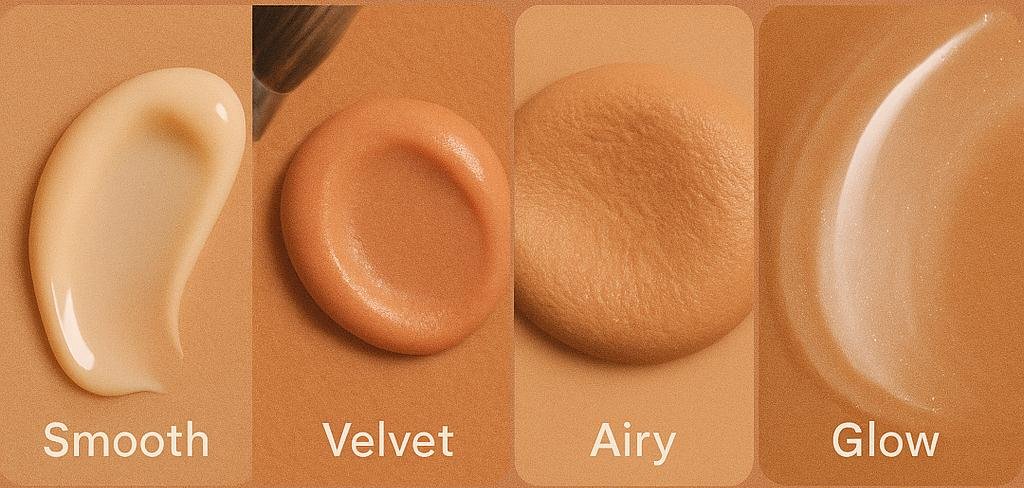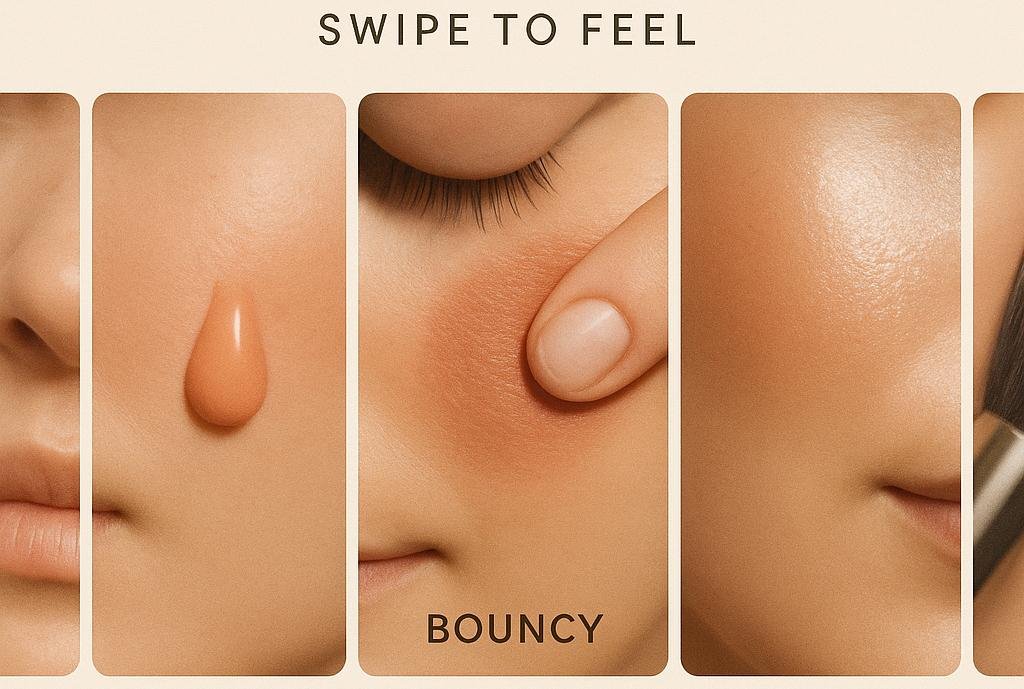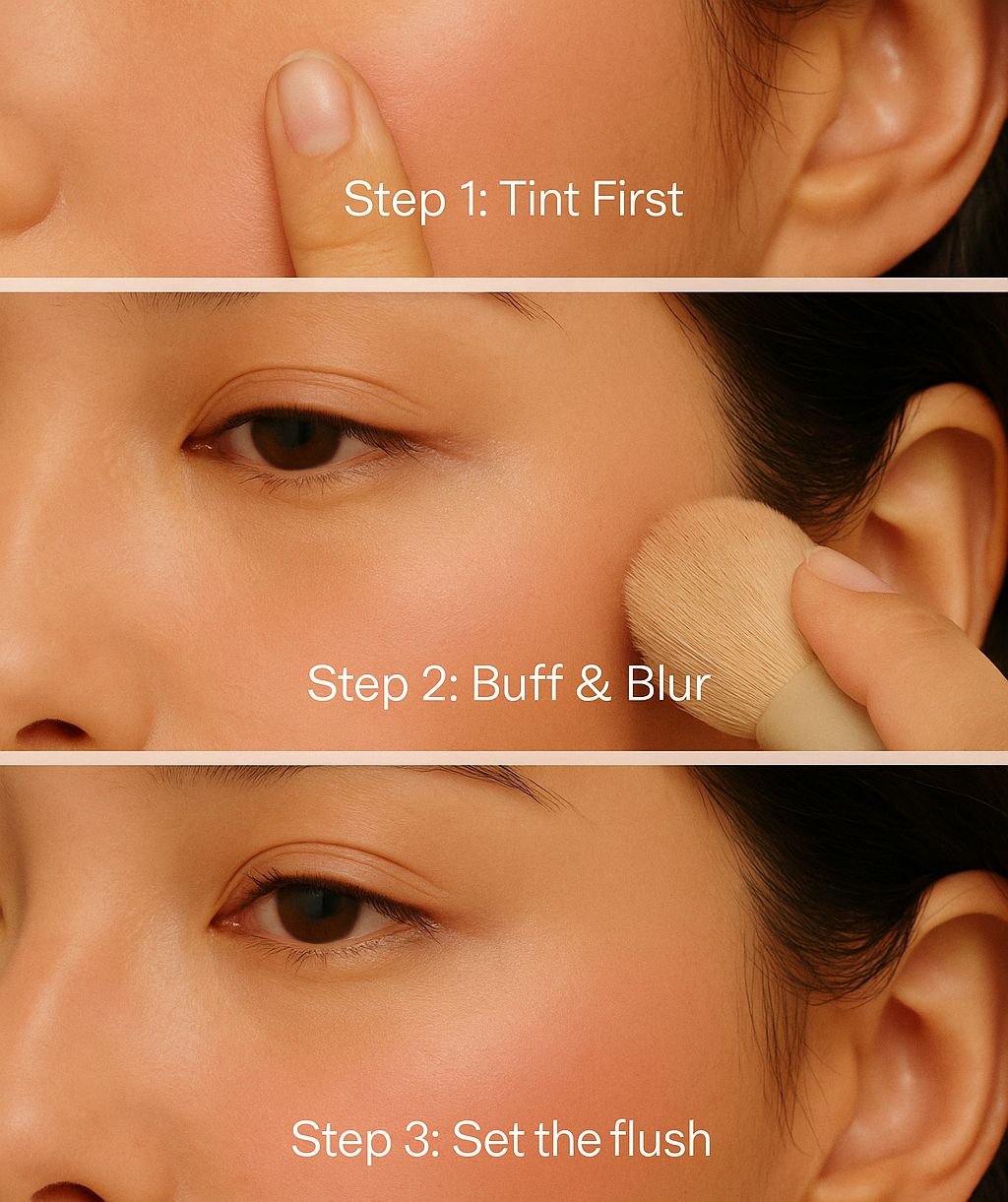Texture-Led Shopping: Why Users Choose Finish First
Discover why texture speaks louder than shade—how tactile psychology drives makeup choices, and how Admigos builds scroll-stopping visuals to guide finish-first decisions.
18 Jun'25
By Yugadya Dubey


Texture-Led Shopping: Why Users Choose Finish First
Have you ever seen a bauble of cream blush in a Reel and literally felt it? Soft, cushiony, barely-there—your thumb hovers, stomach flutters, “I need it.” That's the power of texture-led shopping. Finishes—dewy, matte, velvety—act like silent code, telling your brain it feels right, long before shade does.
Swipeable visuals that look touchable = powerful purchase triggers. And science confirms it: our brain’s tactile systems are activated not just by touch—but by how things look like they’d feel.
The Psychology of Texture When Browsing Beauty
Texture isn't "extra"—it’s primal. Neuroscience shows our brains seek multisensory cues to guide trust and desire. A soft, fluffy powder texture can evoke cleanliness or care, while glossy or creamy finishes mimic hydration or luxury .
Even online, the illusion of touch can be so persuasive that shoppers feel more confident buying. That’s tactile psychology in action: convincing your thumb to stop scrolling .
Finish-First Buying Behaviour
Why do consumers prioritise finish?
- Quick trust: Texture reveals formula performance fast— matte means shine-control, dewy signals glow
- Authentic storytelling: Texture-first visuals feel more “real skin” than macro shade swatches
- Less guesswork: Finishes are easier to predict than subtle hues—less return anxiety
Beauty brands investing in tactile visuals see better conversion rates and fewer returns.
Carousel & Reel Formats That Let You "Swipe to Feel"
Admigos crafts content that lets texture speak—even with no audio, just motion and visuals:
- Frame 1: Macro shot of texture—cream coat, mousse puff, shimmer bead
- Frame 2: Texture in action— finger swipes highlight glossiness, fluff fades
- Frame 3: Side-by-side finish vs skin contrast
- Frame 4: Full face with finish, “Shop the Touch” CTA overlay
Combining close-ups with natural gestures (brush, finger, sponge) builds a sense that you could feel it right now.
Swipe Edits That Amplify Texture
How you reveal can heighten the tactile illusion:
- Swipe-on reveal: half-frame wipe transitions neatly
- Morphing effect: slow texture metamorphosis—for shifting finishes
- Glide transitions: fluid moves mimicking fingers blending
Using texture-driven transitions increases dwell time—scroll metrics go up.
Tactile Trends: What Texture Mode Is Next?
- Mousse & whipped formula: airy, soft, spa-vibe
- Skin tint: ultra-light, sheer-touch skin texture
- Smooth-stick: solid creams that melt—perfect for hybrid shopping
- Micro-glaze: babypink satin that feels like “skin warmth in a tube”
Trend reports predict that "touch-based visuals" lead skincare and beauty visuals in 2025, particularly for Gen Z.
Why Gen Z Prefers Feel-First Commerce
Gen Z shoppers look for sensory trust. They're readier to buy if products feel believable, even through a tiny screen.
They distrust stock swatches and complex copy-intensive descriptions—but a single textured finger-dab Reel? That builds trust, and trust leads to buys.
Quick, snackable, genuine experience wins every time.
How Admigos Helps Brands Nail It
- Texture Discovery Workshops: find key texture selling points
- Storyboard method: craft tactile storyline, frame by frame
- Motion direction: define swipe, morph, pressure-drop effects
- Filming skinswear: macros, natural gestures, fluid lighting
- Format optimization: export for stories + carousels + Reels
- Performance tracking: evaluate saves, shares, CTA clicks
Admigos ensures your visual "feel" matches brand intent—before budget hits the media buy.
Frequently Asked Questions
1. Q: Can people really “feel” texture through a screen?
A: Yes—studies show texture visuals trigger tactile brain regions, making them feel real.
2. Q: Static images vs touch-first video?
A: Touch-first visuals drive higher engagement and lower returns—texture is harder to fake than shade .
3. Q: How long should a texture reel be?
A: 3–5 seconds per frame, 4–6 frames total—enough to show texture without fatigue. Reels should be under 30 seconds total .
Final Thoughts
When we shop for blush, foundation, or glow balm, texture legitimises choices. We trust what we feel—even if it’s through touchable visuals.
In a world full of swipes, let’s build texture-first content that moves—emotionally and conversion-wise. Admigos is your creative partner for that mission: taking texture from a buzzword to a beautiful, scroll-stopping experience.
— By Yugadya Dubey
Texture Play for Carousel Reels: Swipe to Feel
Master the art of tactile storytelling—layering textures and swipe-powered transitions to make viewers nearly feel your product through the screen.

The “Flushed from Within” Look Explained Visually
Uncover the art of placing blush beneath your base, layering tints, and animating dewy glow
